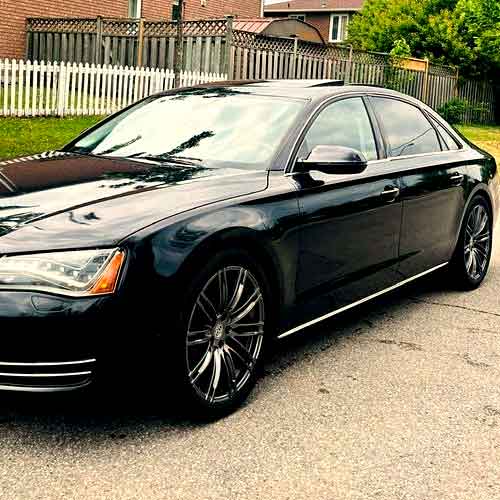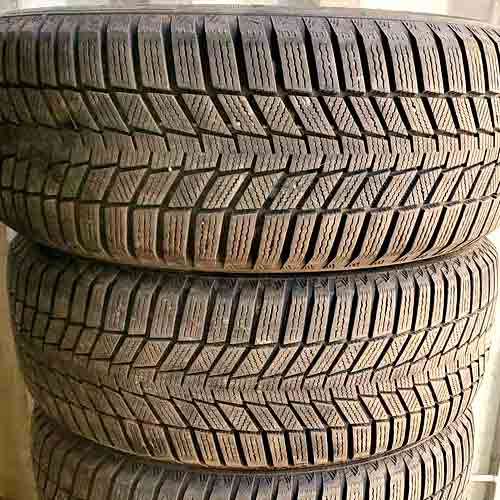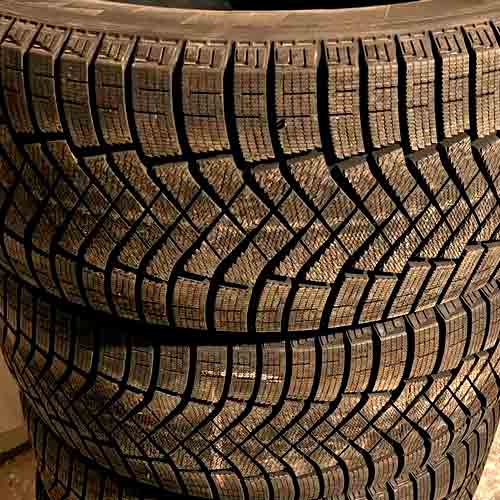Both Pirelli Scorpion Winter and Continental WinterContact SI are the ice warriors of the winter tire realm, each exhibiting unique qualities to face the frosty challenges. Let’s check out the differences of both tires.

Table of Contents
Key Takeaway
The Continental WinterContact SI takes the lead when it comes to:
- Superior wet grip, credited to its multi-directional sipes that enhance water evacuation.
- Excelling under icy conditions with a noticeably shorter braking distance and faster acceleration, attributable to its intricate tread biter arrangement.
- Longer tread life due to its reduced weight, less friction, and greater tread depth.Reduced road noise owing to its closed tread voids.
- Offering better fuel economy due to its lighter weight, leading to lower rolling resistance and a streamlined central rib.
On the other side, the Pirelli Scorpion Winter:
- Leads in hydroplaning resistance, maintaining higher speeds in water tests because of its wider grooves that expel water faster.
- Offers a slight advantage in snow performance, especially with fluffier snow, because of its tread pattern, greater tread depth, and weight.
- Provides marginally better vibration damping, offering superior cushioning over road irregularities.
Wet Traction
The factors determining wet traction chiefly include grip and resistance to hydroplaning, yielding mixed results in these two models.
The Continental WinterContact SI holds the upper hand regarding grip due to its multi-directional sipes, which combine rectilinear and interlocking patterns.

These patterns serve to evacuate water, allowing more of the tire tread to establish contact with the road.
However, the Pirelli Scorpion Winter, with its unidirectional siping and absence of rectilinear slits, provides less grip.
Nevertheless, it slightly outperforms in hydroplaning resistance, managing to maintain slightly higher speeds in both straight and curved water tests due to its wider grooves which expel water more rapidly.
In sum, the Continental WinterContact SI excels in grip, while the Pirelli Scorpion Winter leads in hydroplaning resistance.
Ice Performance
Under icy conditions, the Continental WinterContact SI excels, demonstrating a significantly shorter average braking distance and faster acceleration in tests compared to the Pirelli Scorpion Winter.

This outstanding performance is largely due to its intricate tread biter arrangement – a combination of slanted cuts, dual-directional V-shaped notches, and a host of sipes, all contributing to superior ice grip.
In handling, the WinterContact continues to impress with its sipes and lugs oriented in both lateral and longitudinal directions, offering superior grip.
In contrast, the Pirelli Scorpion Winter falls short due to its relatively larger tread voids and wider notches.
Though the main problem is the tire’s relatively stiffer rubber.
Even though both tires have very thermally apaptive, the Pirelli’s biters tend to get a bit stiffer, and so it lacks the overall ice traction in comparison.
So overall, this ones a win for Continental.
Tread Life
Tread life is largely influenced by a tire’s rolling resistance, an area where the WinterContact outperforms its rival.
Its reduced weight results in less friction, slowing down the overall rate of rubber degradation.
Moreover, its greater tread depth, allows it to reach down to replacement levels (2/32″ in US), slower in comparison, allowing for greater tread longevity.
On the other hand, the Pirelli Scorpion Winter’s greater weight is concentrated on a smaller rubber surface due to its wider tread voids, accelerating tread wear and reducing its lifespan.
However, the difference in performance between the two is not significant, which explains why both lack warranties.
So the Tread Life is seen better on Continental WinterContact SI.
Comfort Levels
Factors such as road noise and vibration absorption determine a tire’s comfort level, which is influenced by the tire’s design, materials, tread pattern, and sidewall structure.
The Continental WinterContact SI, with its closed tread voids, offers superior noise reduction, whereas the Pirelli Scorpion Winter, offering better cushioning over road irregularities, is marginally better at vibration damping.
So in terms of comfort, both tires essentially balance each other out, resulting in a draw.
Snow Performance
Both tires demonstrate strong performance in varying snowy conditions, but the Pirelli Scorpion Winter secures a slight advantage, particularly in handling lighter, fluffier snow.
This edge is largely attributed to its tread pattern.
Now even though both tires have similar direcitonal patterns, the lugs on Pirelli are slightly more oriented to bite on softer snowy tracks.
The tire has the advatage of its greater tread depth, and weight.
With more tread dpeth, it allows more snow to be thrown backwards, where the shoveling snow in return creates a better accleratoin for this tire.
Moreover, with more weight the tire puts more pressure down, pushing snow to get properly trapped within the grooves, promoting enhanced snow-to-snow contact. The loosely packed snow is efficiently gathered by the tire’s interlocking grooves and snow-catching recesses, creating a snowy interface for superior traction.
In comparison, the Continental WinterContact SI, with its continuous center rib and absence of interlocking grooves, fails to gather as much snow, thus falling behind its competitor.
So although the Continental takes the lead on ice, it lacks when it comes to snow, in comparison.
Fuel Economy
Fuel economy is largely influenced by the tire’s traction and overall structural weight.
With this in mind, the Continental WinterContact SI, being lighter, performs better in this regard. Its reduced weight relieves pressure on its lugs, resulting in lower rolling resistance.
Further, the tire’s streamlined central rib facilitates smoother rolling compared to its competitor.
On the other hand, the Pirelli Scorpion Winter falls short due to its increased weight, which elevates its overall rolling resistance.
The extra weight causes the lugs to deform more, particularly during cornering.
And this deformation generates heat and consumes energy that could otherwise contribute to the tire’s rolling efficiency.
Consequently, the Pirelli does not offer as high fuel economy as the WinterContact.
Summing Up
Now both tires have some mixed results.
In the domain of wet traction, the WinterContact SI offers superior grip thanks to its multi-directional sipes, while its competitor holds an edge in hydroplaning resistance.
For winter conditions, the Pirelli Winter takes the lead on snow, while the other offers better ice traction.
As for tread life, the Continental’s reduced weight and greater tread depth afford it longer longevity, even though neither tire has a significant advantage. This also offers this tire with better fuel economy too.
Comfort-wise, the two tires are evenly matched, with the WinterContact SI providing better noise reduction and the Scorpion excelling in vibration damping.